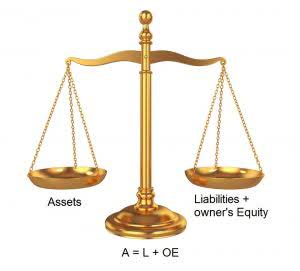
Another possible cause, as mentioned, is adding a new vendor or customer entry to your records, along with value balances (e.g., outstanding balances). Without corresponding entries in other accounts to offset these balances, QuickBooks may create balancing entries in the OBE account. When you add a new inventory item to your chart of accounts, QuickBooks may ask you to specify an opening balance for this item. It can be the initial quantity of inventory on hand or the value of the inventory at the moment of setup. Shouldn’t this balance have a corresponding entry in another account, the OBE account will reflect it.

How to bring an opening balance equity account to zero?

For the correct adjustment procedure, the ending balance should be entered, bank-cleared items should be marked, and then the balance should be reconciled to zero. Whenever a company gets part of the cash from loans or other financing facilities, then the accountant should increase the liability on the credit side of the journal entry as this reflects the debt. This should be done carefully after analyzing the chances of the loan being repaid within one year.
- Thus, the best way to resolve this is to undo all the reconciled transactions and create a Journal entry (JE) to record it.
- While it does have liabilities worth noting, Blue Star also has more cash than debt, so we’re pretty confident it can manage its debt safely.
- It is best to transfer opening balance equity accounts to retained earnings or owner’s equity accounts.
- For example, a positive change in plant, property, and equipment is equal to capital expenditure minus depreciation expense.
- Current assets are typically those that a company expects to convert easily into cash within a year.
- Bank Reconciliation is the process of comparing the transactions in a company’s bank statement to the transactions in QuickBooks.
- If depreciation expense is known, capital expenditure can be calculated and included as a cash outflow under cash flow from investing in the cash flow statement.
Double Entry Bookkeeping
Apple’s total liabilities increased, total equity decreased, and the combination of the two reconcile to the company’s total assets. The presence of Opening Balance Equity on the balance sheet is indicative of the need to allocate these initial values to the appropriate equity accounts. This process is integral to achieving a clean and accurate set of financial statements.
What is opening balance equity in QuickBooks Online and Desktop?
In contrast, the balance sheet aggregates multiple accounts, summing up the number of assets, liabilities, and shareholder equity in the accounting records at a specific time. The balance sheet includes outstanding expenses, accrued income, and the value of the closing stock, whereas the trial balance does not. Understanding opening balance equity is crucial what is opening balance equity on a balance sheet for businesses to accurately track their financial position and ensure compliance with accounting standards. Any errors in recording this account can have a significant impact on a company’s financial statements and may result in penalties or fines. Therefore, it is important for businesses to ensure that their accounting records are accurate and up-to-date.
For instance, if someone invests $200,000 to help you start a company, you would count that $200,000 in your balance sheet as your cash assets and as part of your share capital. On the left hand side of the accounting equation the assets increase by 63,500. This is matched on the right hand side by an increase in liabilities of 42,750, an increase in equity of 20,750. Opening balance equity helps offset the opening balance transactions, providing the correct start for a balance sheet and the financial records in the long run. The changes that are generally reflected in the equity statement include the earned profits, dividends, inflow of equity, withdrawal of equity, net loss, and so on. Opening Balance Equity is affected by transactions that involve equity accounts.
- The significance of Opening Balance Equity extends beyond mere numbers on a ledger; it ensures continuity and accuracy in financial reporting.
- In both cases, the external party wants to assess the financial health of a company, the creditworthiness of the business, and whether the company will be able to repay its short-term debts.
- We can see from the most recent balance sheet that Blue Star had liabilities of ₹38.8b falling due within a year, and liabilities of ₹1.26b due beyond that.
- Shareholder equity represents the net value of a company, meaning the amount that would be returned to shareholders if all the company’s assets were liquidated and all its debts repaid.
- If splitting your payment into 2 transactions, a minimum payment of $350 is required for the first transaction.
This will almost always be from one of the situations described above where an opening balance was mistakenly entered into an account. As a result, if you create a new asset account with a balance, you must usually offset it by the same amount on the other side of the equation. Owner’s equity refers to the investment of the owner in the business minus the owner’s withdrawals from the business plus the net income (or minus the net loss) since the beginning of the business. The significance of Opening Balance Equity extends beyond mere numbers on a ledger; it ensures continuity and accuracy in financial reporting. By effectively managing this element, companies can maintain the integrity of their financial data, which is crucial for informed decision-making and maintaining stakeholder trust. Jami Gong is a Chartered Professional Account and Financial System Consultant.
